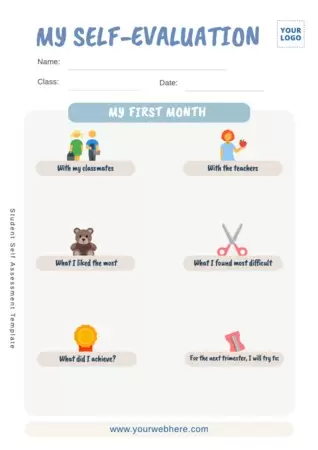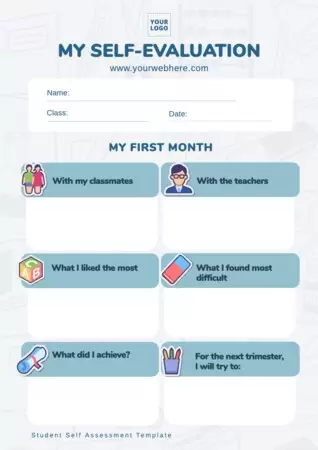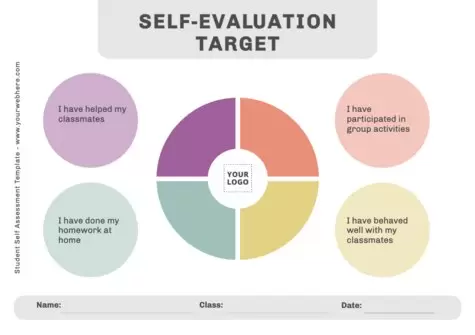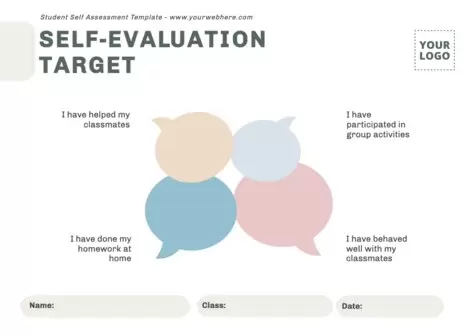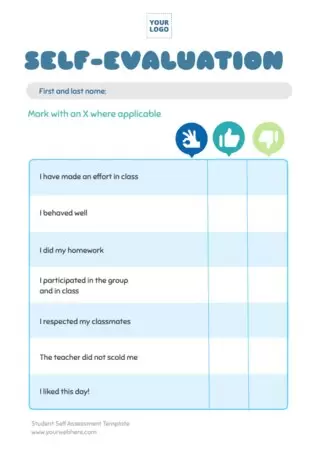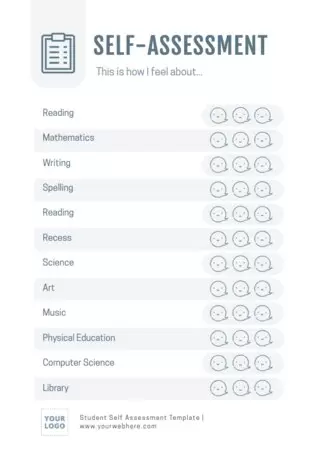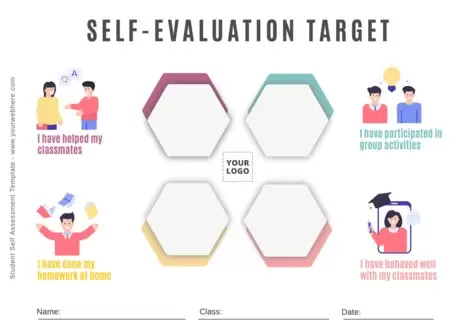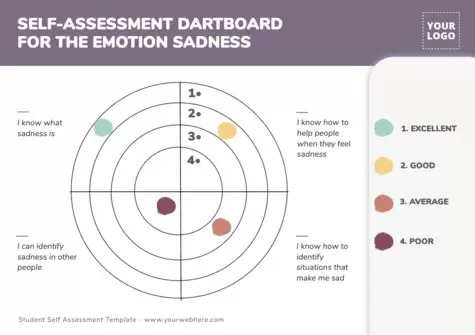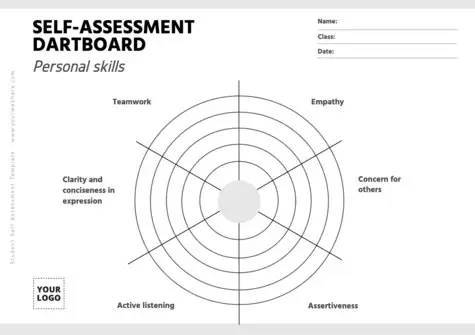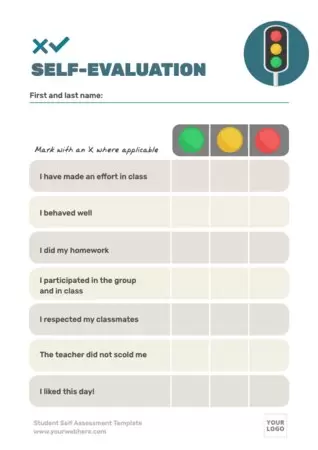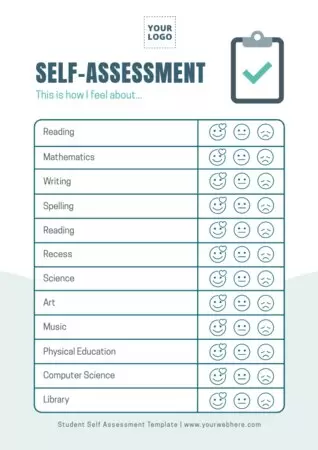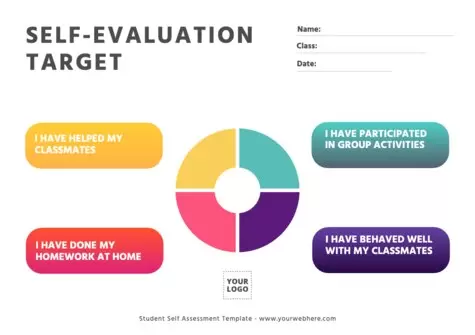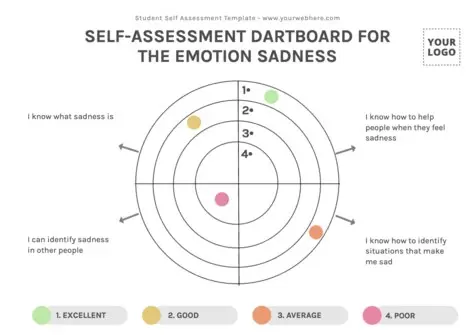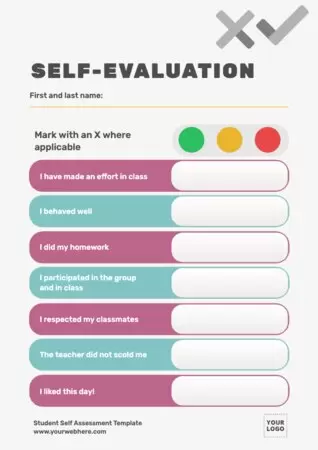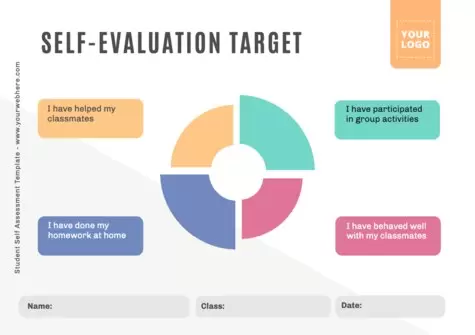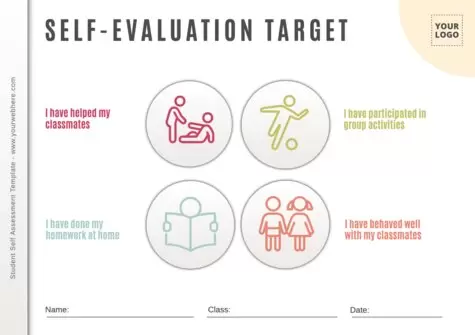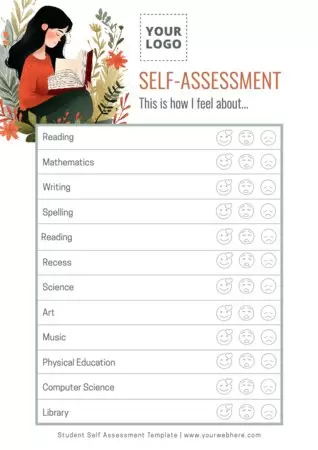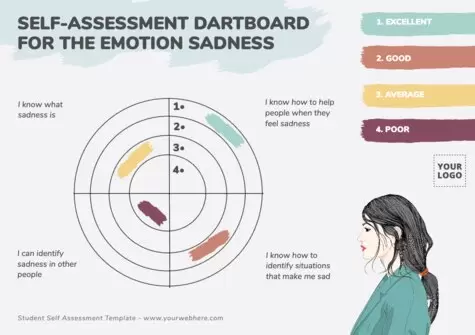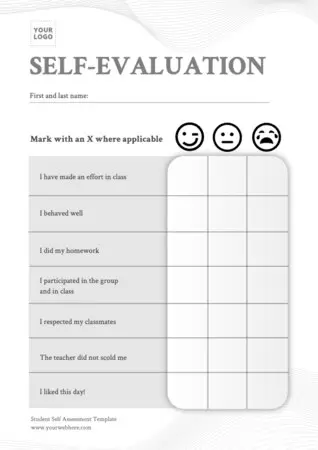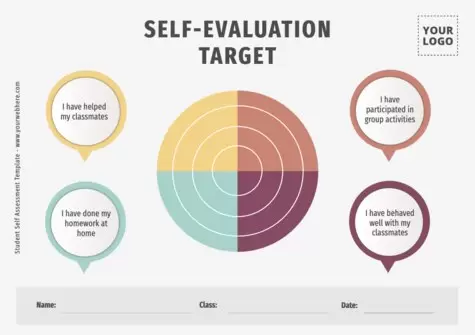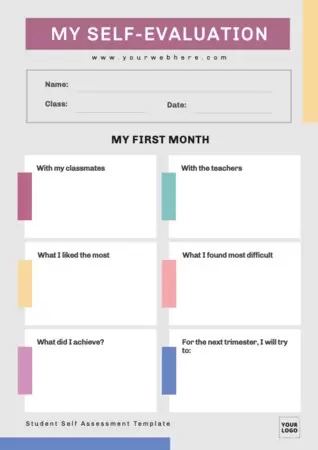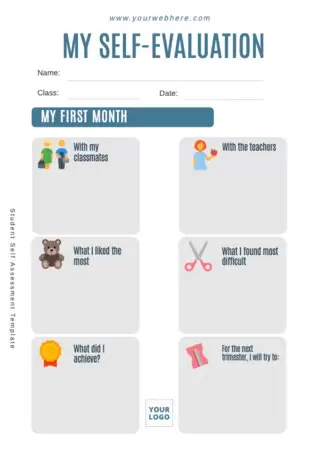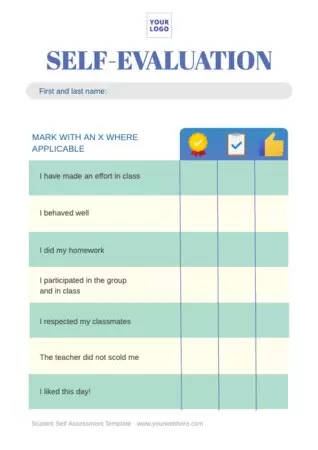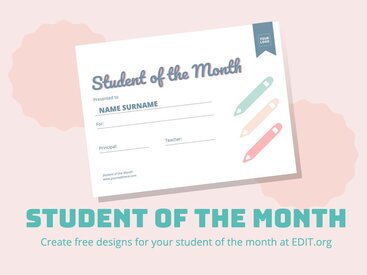

Create an example of Student Self Assessment for students with the online graphic editor Edit.org. Your designs ready to download for free in just a few clicks.
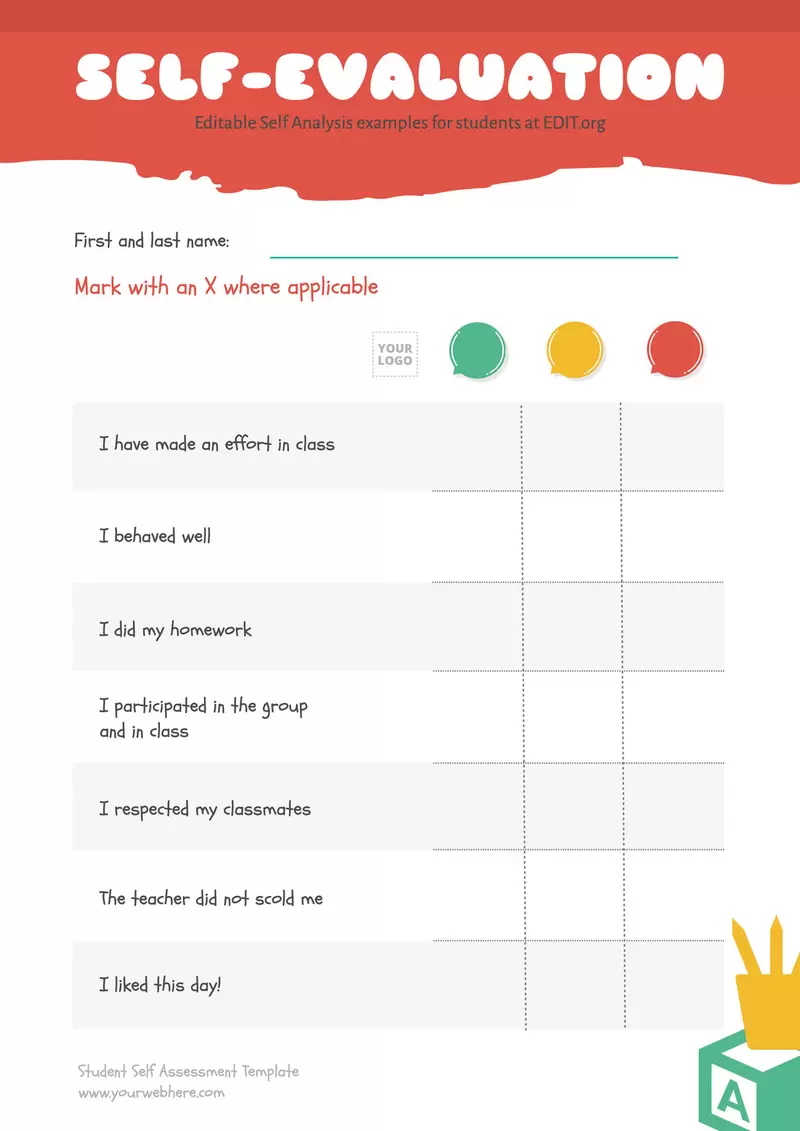
As teachers, you constantly evaluate students to determine their academic performance. A good way to make pupils think about whether they are achieving the results they want or if they feel comfortable in the classroom is to propose a self-evaluation questionnaire to check their personal opinion. It is important that it be honest and put down on paper.
But some may wonder, what is student self-evaluation? Student self-evaluation is the ability of the student to evaluate their own achievements in relation to a specific task: it means describing how they achieved it, when, how they positioned their work in relation to others, and what they can do better. Through educational self-evaluation, we want to evaluate not only progress but also skills or abilities, scope, and growth. This requires students to be very honest and realistic so as not to fall into self-deception.
The benefits that this evaluation format brings to students are commitment to their decisions and actions, the development of their own autonomy, and the process of introspection to think about their strengths and weaknesses. In addition, it helps the teacher to know what processes the student follows to continue learning. In this article, you will find different examples of self-evaluation for secondary and primary students.
If you need more educational graphic content for your teachings, in our online editor, you can find designs to use in your classes. You can also find form designs for teacher evaluations, which are very useful for assessing students' satisfaction level with the instructor.
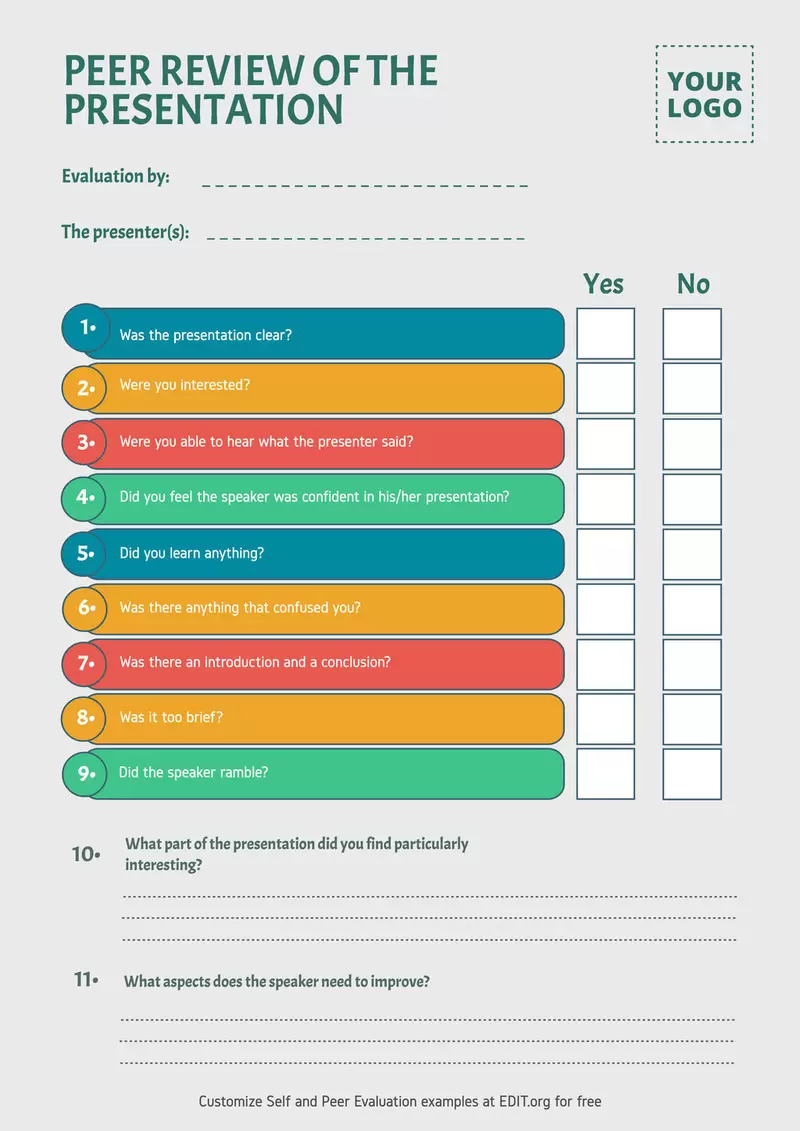
Easy, right?
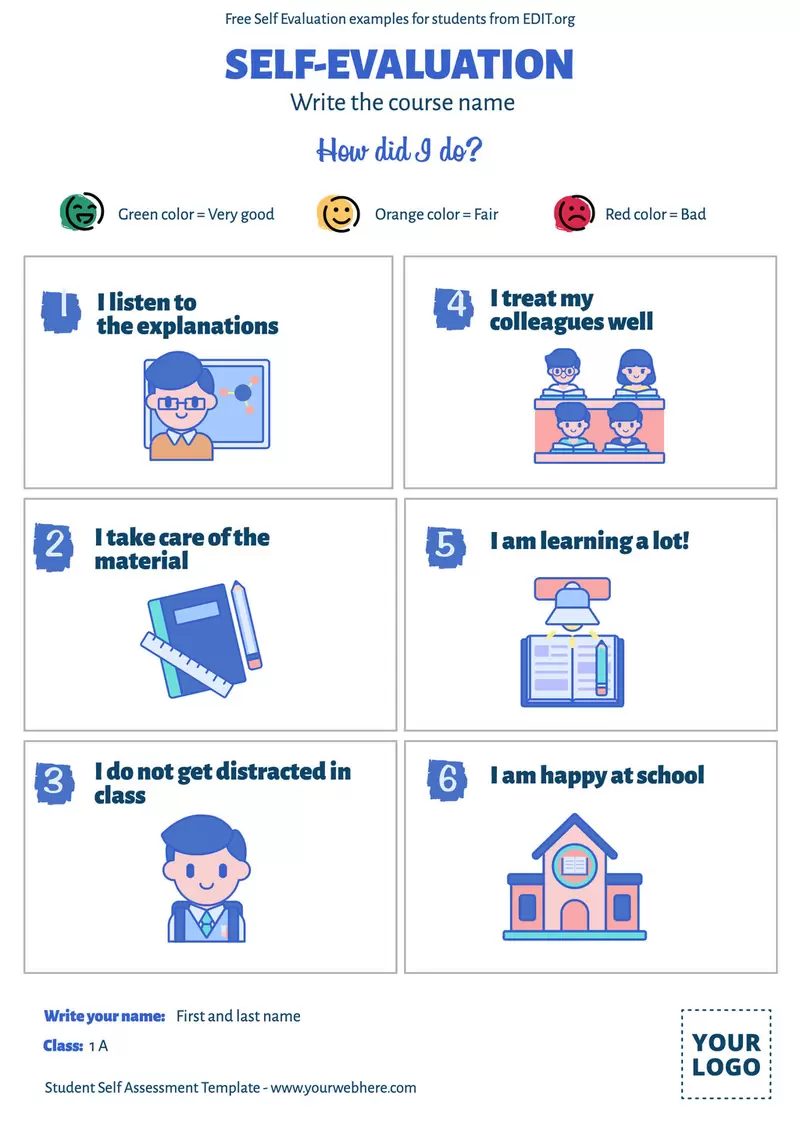
A great way to help your students learn and grow is through self-evaluation. With our editable online self-evaluation sheets, you can create customized questions and evaluations for your students to complete and track their progress over time.
There are many examples of student self-evaluation. Some of the most commonly used are the typical questionnaires in which the teacher gives their students pre-written sentences and they must answer them honestly. Here's how it works:
And the best part? Our evaluations are fully customizable, so you can create specific questions for the needs and abilities of your students.
